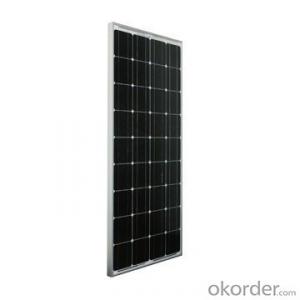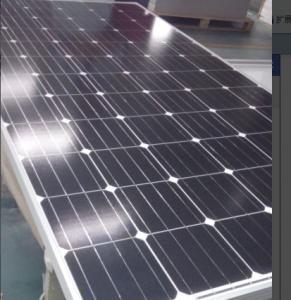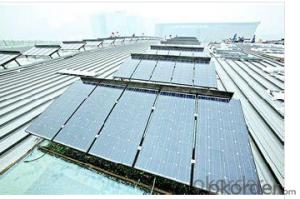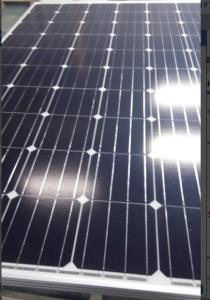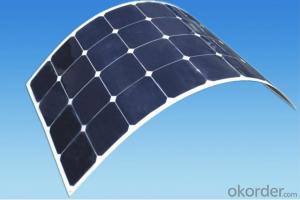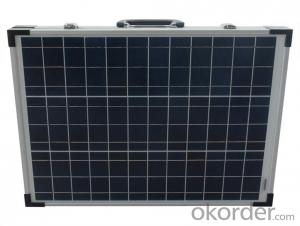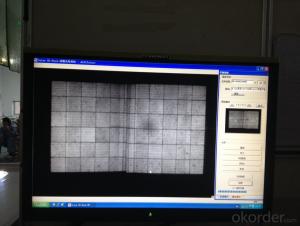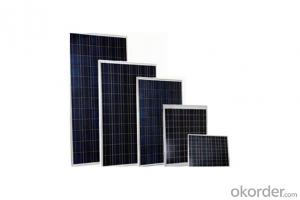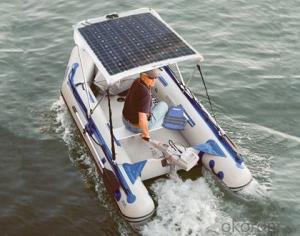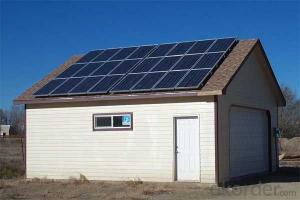Sunpower Flexible Solar Panels for Off-Grid Solar System 12V 100Wp Polycrystalline Solar Panels
- Loading Port:
- Tianjin
- Payment Terms:
- TT OR LC
- Min Order Qty:
- 1000 watt
- Supply Capability:
- 10000000 watt/month
OKorder Service Pledge
OKorder Financial Service
You Might Also Like
Specification
Product Description
Key Specifications/Special Features
Specifications:
Number of cells: 36 pieces
Solar panels maximum power: 100W
Output tolerance: +3%
Optimum power voltage (Vmp): 18.01V
Optimum operating current (Imp): 5.56A
Open circuit voltage (Voc): 21.05V
Short circuit current (Isc): 7.94A
Solar cell efficiency: 11.76%
Solar PV module efficiency: 10.16%
Solar panels size: 1120 x 680 x 30mm
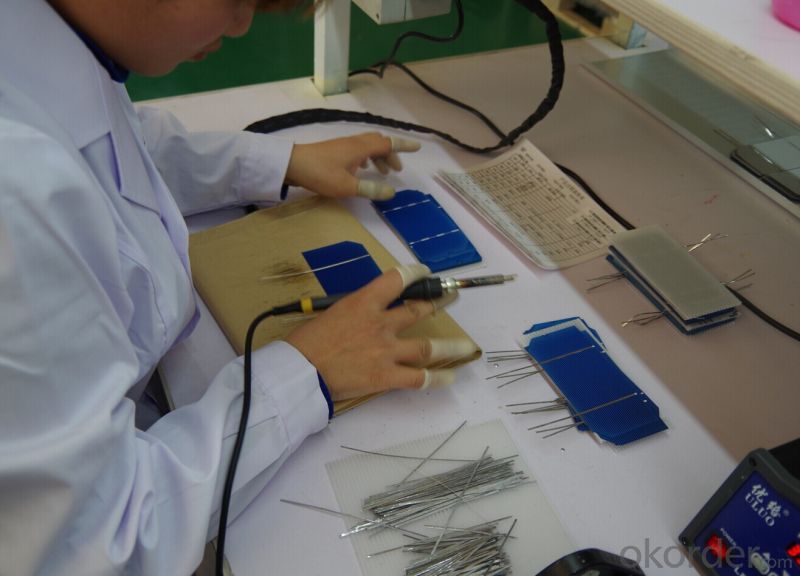
Frame:
Type: anodized
Material: aluminum alloy
Thickness: 30mm
3-piece by pass Schottky diode: 10A
Cable: TUV certified cable 90cm length
Maximum system voltage: 1,000V
Solar panels features:
TUV, MCS, CEC, IEC61215, IEC61730, CE and UL approved solar panels
Long lifespan: 25 years lifetime guarantee, 12 years workshop warranty, 90% output in first 10 years, 85% output in next 15years
Solar panels are withstand extreme working condition (from -40to 120°C)
Salt protected (coastal area workable)
Solar panels output: positive tolerance 0-10Wp
Custom-made available
Grade A solar panels rated by TUV
High transformation efficiency solar panels
New UV reflector protected layer
Maintenance-free solar panels
No exposed metal parts
100% EL test before and after laminator for each solar panels
CHUBB insurance company to guarantee the quality of solar panels
Bankable solar panel in Germany, Italy, UK and Denmark
Applications:
On-grid or off-grid solar power stations
1MW solar power solar power stations
Commercial and industrial building roof-top systems
Home and official appliances power supply solar systems
Power supply for traffic, security, gas industry
12V, 24V, 48V and 96V battery charging system
Material of solar panels:
High transmission tempered 3MW costing glass, hailstone resistance
TPT imported from Krempel, Brighstone and 3M
Rugged design to withstands high wind pressure and snow load, easy installation
Smart junction box with built-in diode prevents reverse charging
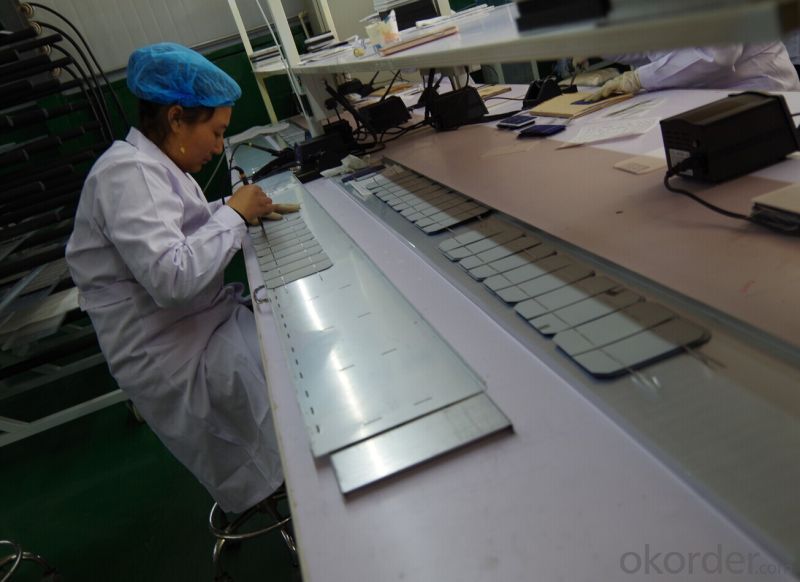
Product Details
Primary Competitive Advantages:
Distributorships Offered
Electronic Link
Experienced Staff
Form A
Green Product
Guarantee/Warranty
International Approvals
Military Specifications
Packaging
Price
Product Features
Quality Approvals
Reputation
Service
Small Orders Accepted
Product Performance
Prompt Delivery
| Electrical Data | Module Size | Weight | Number of cells series | ||||
| Nominal Power | Max-Power | Max-Power | Open-Circuit | Short-Circuit | |||
| Voltage | Current | Voltage | Current | ||||
| Pmax | VMPP | IMPP | VOC | ISC | |||
| W | V | A | V | A | mm | Kg | pc |
| 10 | 17.2 | 0.58 | 21.6 | 1.31 | 340*254*17 | 1.2 | 36 |
| 20 | 17.2 | 1.16 | 21.6 | 1.93 | 340*460*25 | 1.8 | 36 |
| 30 | 17.2 | 1.74 | 21.6 | 2.57 | 350*670*30 | 3 | 36 |
| 40 | 17.2 | 2.32 | 21.6 | 3.23 | 450*670*30 | 3.5 | 36 |
| 50 | 17.2 | 2.91 | 21.6 | 3.86 | 550*670*30 | 4.5 | 36 |
| 60 | 17.2 | 3.49 | 21.6 | 3.86 | 603*670*30 | 5.3 | 36 |
| 70 | 17.2 | 4.07 | 21.6 | 4.51 | 758*670*30 | 6 | 36 |
| 80 | 17.2 | 4.65 | 21.6 | 5.17 | 758*670*30 | 6.5 | 36 |
| 90 | 17.2 | 5.23 | 21.6 | 5.81 | 935*670*30 | 6.7 | 36 |
| 100 | 17.2 | 5.8 | 21.6 | 6.46 | 935*670*30 | 6.7 | 36 |
| 110 | 17.2 | 6.4 | 21.6 | 7.08 | 1061*670*35 | 8 | 36 |
| 120 | 17.2 | 6.98 | 21.6 | 7.72 | 1161*670*35 | 8.6 | 36 |
| 130 | 17.2 | 7.56 | 21.6 | 8.4 | 1277*670*35 | 9.8 | 36 |
| 140 | 17.2 | 4 | 21.6 | 4.4 | 1480*670*35 | 10.9 | 36 |
| 150 | 17.2 | 4.17 | 21.6 | 4.58 | 1480*670*35 | 10.9 | 36 |
| 160 | 34.4 | 4.65 | 43.2 | 5.17 | 1480*670*35 | 10.9 | 72 |
| 170 | 34.4 | 4.94 | 43.2 | 5.49 | 1172*983*35 | 11.7 | 72 |
| 180 | 34.4 | 5.23 | 43.2 | 5.81 | 1172*983*35 | 11.7 | 72 |
| 190 | 34.4 | 5.52 | 43.2 | 6.14 | 1260*983*35 | 14.6 | 72 |
| 200 | 34.4 | 5.81 | 43.2 | 6.5 | 1260*983*35 | 14.6 | 72 |
| 210 | 34.4 | 6.1 | 43.2 | 6.85 | 1488*983*35 | 14.6 | 72 |
| 220 | 34.4 | 6.4 | 43.2 | 7.08 | 1488*983*35 | 15.2 | 72 |
- Q: I need a solar panel for my laptop as i am going camping in the desert, and i need my laptop. There are two choices of solar panels, One is 0 watts and 2 V and maximum power current 0.56 amps. The other one is 2 watts, 2 V and no mention of current. My laptop plug says input 00-240V and .5A and then output 5V-5A. Which one should i get for my laptop. If there are other choices please tell me ill look them up on OKorder.Thanks
- I'm afraid neither of these panels will do much for charging or running your laptop. If the power brick is supposed to emit 5 volts at 5 amps, that's 75 watts. Neither of those panels provides enough voltage and the power output is obviously far too small. The capabilities of solar power are vastly overestimated for small panels. Sunlight is limited to about kilowatt per square meter under ideal conditions (summer time, clear blue sky, for a few hours around noon in the US southwest). But consumer panels top out at about 5% efficiency, so your limit is 50 watts per square meter - in other words you would need about half a square meter, or about six square feet, of panel to provide 75 watts. And even under ideal conditions you will only get that much for a few hours each day. Also, the panel's voltage output is not regulated, so even if you find a panel that emits 5 volts (this would actually have to be made up of groups of 30 cells in series, as they emit half a volt each at most) you can't just connect the panel output into your laptop's DC in. You'd need a regulated DC-to-DC supply, and since that is not 00% efficient it will cost a bit of the power... now you need even more panel area. All in all, not really a practical thing to carry along on a camping trip.
- Q: Can solar panels be installed on water bodies or reservoirs?
- Yes, solar panels can be installed on water bodies or reservoirs. This is known as floating solar or floating photovoltaic (FPV) technology. It involves mounting solar panels on buoyant platforms on the surface of the water. This approach offers several benefits, including reduced land requirements, increased energy generation due to the cooling effect of water, and reduced evaporation from the water body.
- Q: How much space is needed to install solar panels?
- The amount of space required to install solar panels depends on various factors such as the type of solar panels, their efficiency, and the energy needs of the property. Generally, a typical rooftop solar panel system requires about 100-400 square feet of space for every kilowatt (kW) of solar panels. Additionally, open areas or ground-mounted systems may require more substantial space. It is recommended to consult with a solar installation professional who can assess the specific requirements based on the location and energy goals.
- Q: Can solar panels be damaged by hail or other weather conditions?
- Yes, solar panels can be damaged by hail or other severe weather conditions. Hailstones can cause cracks or dents on the surface of the panels, which can affect their efficiency or even render them inoperable. Other extreme weather conditions like high winds, heavy snow, or lightning strikes can also potentially cause damage to solar panels. However, it is important to note that modern solar panels are designed to withstand a certain level of weather-related stresses and are often tested for durability.
- Q: Can solar panels power my entire home?
- Yes, solar panels can potentially power your entire home depending on various factors such as the size of your system, energy consumption, and geographical location. It is important to assess your energy needs, install an appropriately sized solar system, and consider factors like sunlight availability to ensure sufficient power generation.
- Q: Are solar panels safe for the environment?
- Yes, solar panels are safe for the environment. They generate clean and renewable energy by converting sunlight into electricity, resulting in no harmful emissions or pollution. Additionally, solar panels do not deplete natural resources and have a minimal impact on ecosystems when properly installed and maintained.
- Q: Dose a solar panel need the entire range or spectrum of sunlight to produce power?
- It's a huge field of study, very important to solar cell development. People are trying to optimize spectral response for sunlight, even for sunlight in specific places. Google solar cell spectral response for many many websites. Most of them are specific to one experiment.
- Q: Can solar panels be installed on flat roofs?
- Yes, solar panels can be installed on flat roofs. In fact, flat roofs are one of the common types of roofs where solar panels are installed. However, proper installation techniques and mounting systems are required to ensure optimal efficiency and safety.
- Q: I am planning to buy some solar panels for my cabin and i want to be able to store the electricity. what kind of batteries should i get? i will be running simple things like a tv and radio. where can i buy these batteries? where should i look for the best batteries?
- If you will be storing them outdoors, you can use auto batteries. Indoors, use sealed marine batteries. Number and size depends on your needs. You will need a charge controller between the solar panels and the batteries to get the maximum power out of the array and to avoid damage to the batteries. And you will need an inverter to convert the 2 or 24 volts to 20 or 240 VAC. One large lead acid battery will supply about 000 watt-hours of energy, enough for 200 watts for 5 hours. You have to look at your loads and decide on how many batteries you need. Frequently it is cheaper to buy new appliances that use less power, as that power difference can save a lot of money in batteries, inverter, charge controller and solar panels. But it sounds like a few thousand watt-hours will be enough, or 2 large batteries. The real limiting factor is how much money you want to spend for the solar panels themselves. .
- Q: when building a solar panel should the diode be on the positive or negative sidelittle more detail i just built a solar panel and im running it to a grid tie converter should i put diodes in if i add another panel or are they only for battery systems?
- I'm assuming you're talking about the blocking diode and not the bypass diodes. Positive side.
Send your message to us
Sunpower Flexible Solar Panels for Off-Grid Solar System 12V 100Wp Polycrystalline Solar Panels
- Loading Port:
- Tianjin
- Payment Terms:
- TT OR LC
- Min Order Qty:
- 1000 watt
- Supply Capability:
- 10000000 watt/month
OKorder Service Pledge
OKorder Financial Service
Similar products
Hot products
Hot Searches
Related keywords
